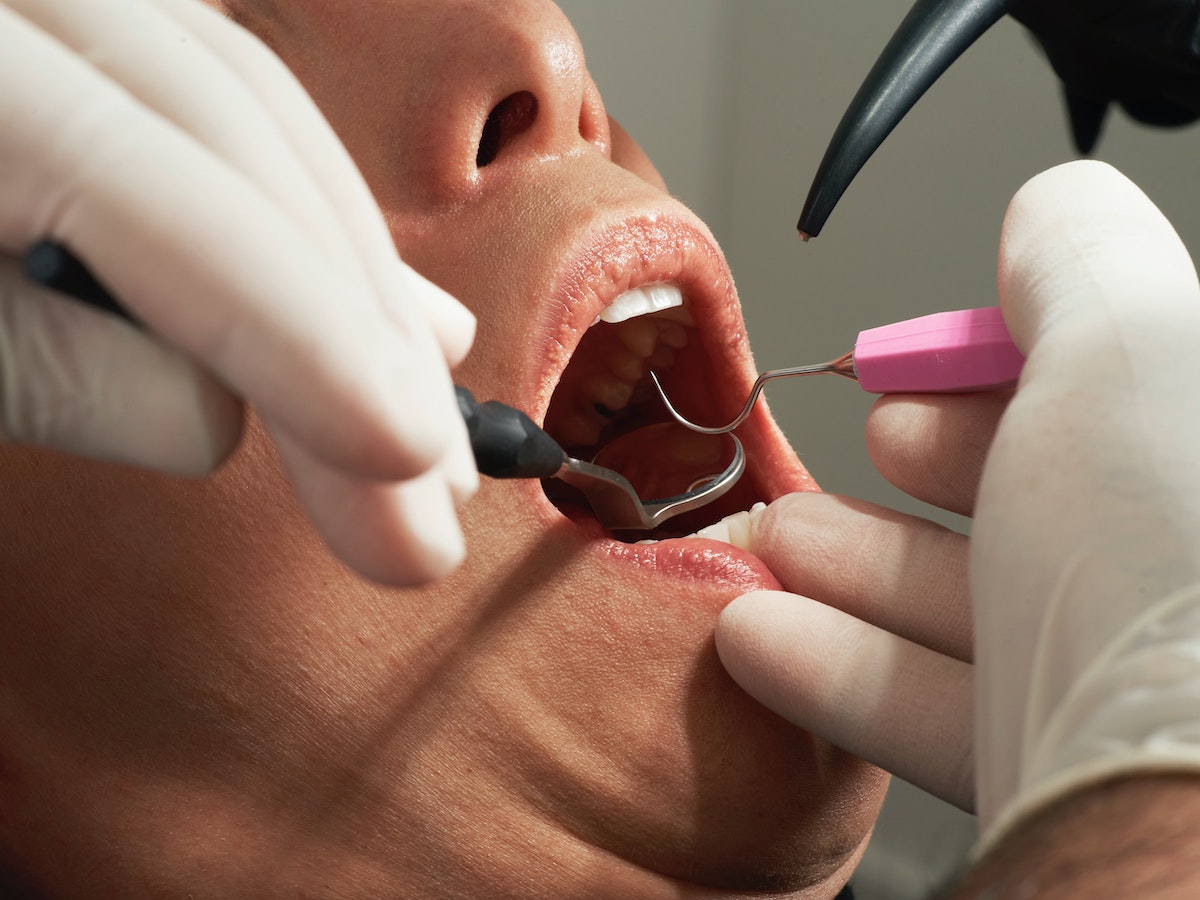A cavity, simply put, is a hole in a tooth. In the early stages, a cavity may resemble an innocent white spot. But when left untreated, that cavity may cause more serious dental issues. Can cavities go away on their own? Unfortunately, no.
A “Hole” Lot of Trouble
Although many of us do our best to brush and floss after we eat, the bacteria and foods we eat build up over time, forming a sticky deposit known as plaque. All day long, bacteria in our mouths feed off the foods we eat. And when we drink or eat a sugary treat, the bacteria live off this sugar and use it to make acid. The acid remains on our teeth, gradually but consistently attacking the outer surface of our teeth.
As the acid erodes the tooth surface, a cavity forms as the result. While cavities may form on front teeth, the grooves and pits in back teeth make them even more susceptible to decay.
91 percent of Americans over the age of 20 have had cavities at some point in their lives. Of these, 27 percent have untreated cavities. The CDC reports that 1 of 5 children aged 5 to 11 years have at least 1 untreated decayed tooth.
As much as we’d like them to, cavities won’t go away by themselves. If a cavity is not addressed, the bacteria can travel from the surface of the tooth— the enamel—to the middle layer (known as the dentin) and potentially to the deepest tooth layer (the pulp). If bacteria from the cavity breach the pulp, the tooth becomes infected and pulpitis may occur. Or, it could result in an abscess. At this stage, a root canal is often the necessary procedure to clean and restore an infected tooth.
The Best Solution for Cavities: See a Dentist

Since cavities do not go away on their own, what is the best solution to dealing with them? Regular dental exams—every six months or at least once a year—provide the best chance of discovering a cavity early on. Regular brushing and flossing teeth in between these routine dental visits are also critical in terms of preventing a cavity and practicing good dental health.
When identified during a routine dental exam, the cavity may be repaired with fluoride. But if the cavity is deeper, a dentist will need to fix it and fill the affected area in the tooth with a silver or white colored material. This is a filling. The larger and deeper the cavity, the more complex the treatment.
Even though going to see a dentist is the best option, many people resist. Their reluctance is often due to cost, pain, or fear.
“A Dental Visit is Going to Cost Me Money”
A good number of people do indeed refuse to go see a dentist, at least until they’re experiencing pain and realize they need to consult a dental professional. According to The Dental Center, a routine visit to the dentist’s office—consisting of a check-up, cleaning and basic X-rays—can cost up to a few hundred dollars.If a cavity is discovered, the average cost for the dentist to fill the tooth with silver amalgam ranges from $60 to $150 (again, depending upon location).
If you have dental insurance, the out-of-pocket cost, your copay or deductible, could be much less. Many dentists offer payment plans, and there are options such as dental credit cards that can help patients get the treatment they need. Although the routine visit and potential cavity filling carries a cost, not visiting the dentist regularly could easily add up to far greater cost.
“My Teeth Are Already In Good Shape, Right?”

Another common reason many don’t make that dental appointment is because they think their teeth are in good shape as is, and that brushing and flossing alone are enough. While brushing and flossing daily are important steps toward good dental health, these actions alone are not enough to ward off cavities and even more serious issues. Many Americans think that if nothing in their mouth is causing them pain or discomfort, they are fine and don’t need to see a dentist regularly.
Too often people tend to only brush the teeth they can see, neglecting the back teeth where bacteria may be doing damage that isn’t noticeable until later. Routine visits to the dentist provide a deep cleaning, including the removal of plaque that may be trapped in hard-to-brush places and has hardened into tartar. Tartar is tough to remove with at-home brushing and flossing. Even the most diligent person who brushes and flosses daily can’t prevent plaque from accumulating on teeth. And tooth decay can lead to several other serious dental health issues beyond cavities, possibly even the loss of a tooth and irreversible gum disease.
“I’m Afraid of Going to the Dentist”
Others sidestep a routine dental appointment because they fear going to the dentist.
Anxiety over the thought of spending time in a dentist’s chair is real. But so is gum disease. Not going to the dentist has consequences.
Believe it or not, there is even a Dental Fears Research Clinic. The Dental Fears Research Clinic at the University of Washington in Seattle reports that between 5 percent and 8 percent of Americans avoid dentists entirely due to fear. A full 20 percent of Americans say they experience enough anxiety over the thought of seeing a dentist that they will only go when absolutely necessary. Unfortunately for these individuals, the pain or extreme discomfort that eventually convinces them to seek a dental professional’s help may be too late for less costly and less invasive remedies.
Having a cavity filled is a standard dental procedure. Your dentist has resources ready to make the process as comfortable and pain-free as possible. A typical cavity filling can be done in one office visit. Other than a few hours of that numb feeling while the anesthetic ebbs, there aren’t normally any residual effects and any pain or discomfort caused by the cavity will be gone.
Will Cavities Go Away if I Don’t See a Dentist?
Cavities are not going to go away on their own. While the process of seeking a dental professional will mean budgeting for the cost of an exam or two and bitewing X-rays once a year, the cost of not going to a dentist can be far greater.
That first visit to the dentist after some time has passed may mean more time in the chair, as more plaque has undoubtedly accumulated over time. But making that visit a reality is a smart step toward long-term dental health. Cavities won’t go away on their own, but you can prevent them by visiting your dentist regularly. Need help locating a dentist near you? Use this easy link and get started today.


